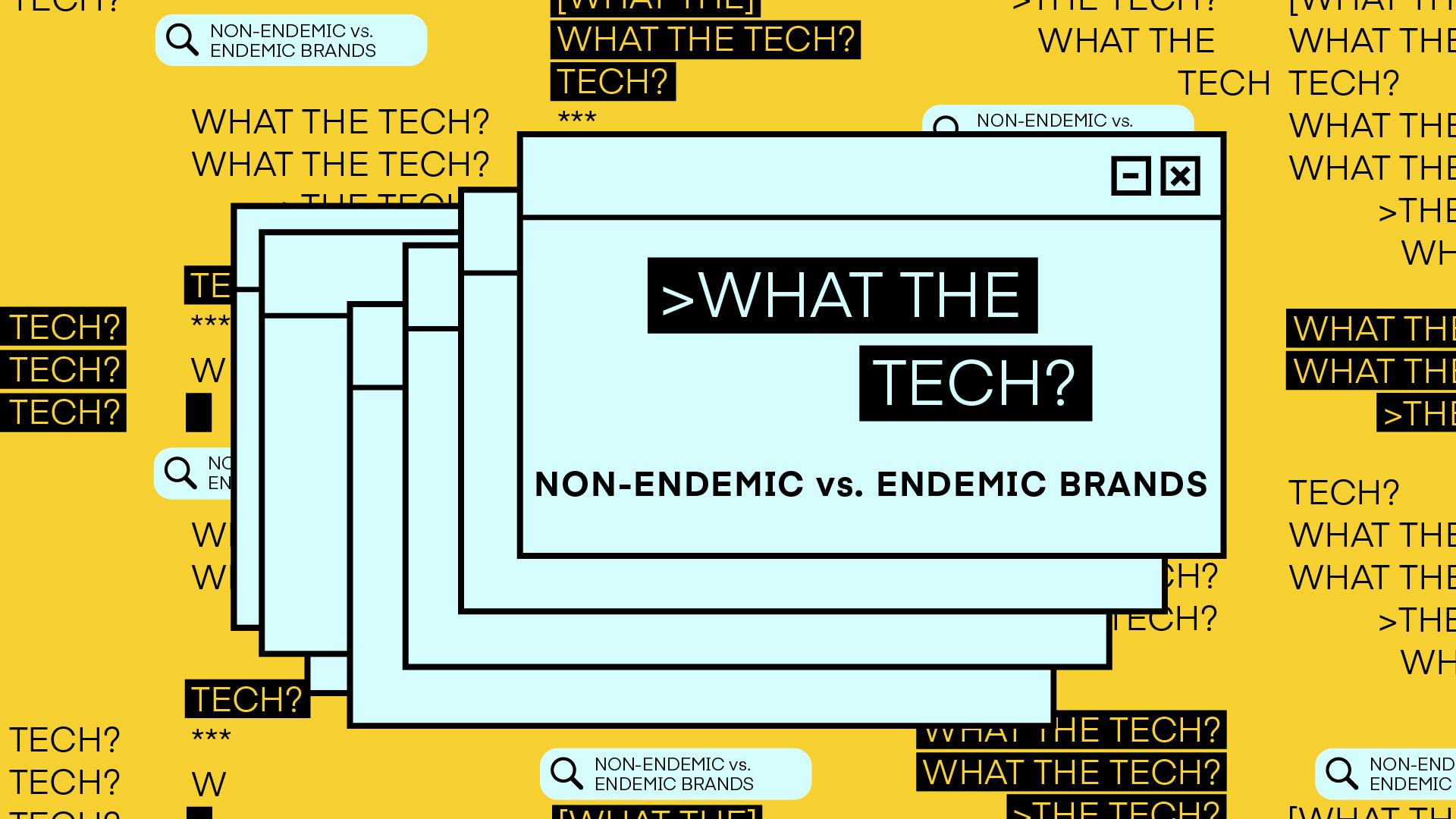What the Tech are endemic and non-endemic brands in retail media?

In just a few years, retail media has gone from a novel channel for retail brands looking to boost online sales to one of the largest and fastest-growing categories in all of advertising. Retail media now accounts for 11 percent of all ad dollars spent, with some predicting that retail media will eclipse TV advertising revenues in five years.
As retail media has grown, it’s given rise to a new subcategory called non-endemic retail media. To better understand this burgeoning advertising format, we’ve compiled this explainer.
First off, what is retail media?
We cover this topic in more depth in this What the Tech piece, but generally speaking, retail media refers to advertising opportunities on e-commerce websites.
For years, retail websites functioned simply as storefronts. But several years back, Amazon realized that its search-results pages could generate advertising revenue. Instead of just acting as a repository of available products, Amazon could charge brands to prominently feature their products in search results, on the homepage, and in other locations across the site.
The category has since grown to include all major online retailers, such as Walmart, Home Depot, and the grocery chain Albertsons.
What does ‘endemic’ mean in retail media?
Endemic, in general, refers to when something is native to and regularly found in a given location. In terms of retail media, “endemic” describes products that are typically sold by the e-commerce site where the search is taking place.
For example: Say you’re shopping for kitchenware on Target’s website. You type “cooking utensils” into the search bar, and you see sponsored product listings for OXO’s new line of spatulas and tongs in the search results. Those items are available to buy directly from Target.com, meaning they are endemic to the website, and thus classified as endemic retail media.
What does non-endemic mean, then?
Selling advertising space for products they offer is an obvious and lucrative revenue stream for online retailers. But some pioneering e-commerce sites have realized they can extend their retail media operations to include products they don’t sell. That’s non-endemic retail media.
Kristi Argyilan, SVP of retail media at Albertsons, provides an excellent example in this video interview with The Current:
In Argyilan’s example, Albertsons’ website would be a great advertising destination for car brands. Albertsons doesn’t sell cars, of course, but its shopper data is immensely valuable to car brands. People who buy lots of Goldfish crackers, to use her example, probably have young children and are therefore a prime target market for minivans. Cars are non-endemic to Albertsons’ retail media network, but car brands can benefit from advertising (and picking up insights) there.
Are there any other applications?
Non-endemic retail media also includes using retail data to inform advertising campaigns that run on other channels.
To build upon on the Albertsons example, Albertsons can use its extensive trove of customer data to help a car brand execute a connected TV campaign for its new minivan. Albertsons has data on shoppers who buy Goldfish crackers and other snacks that would indicate they have children and thus might be in the market for a minivan. Using this data, Albertsons can identify those same consumers on ad-supported video on demand (AVOD) services, such as Hulu or Pluto TV. When those consumers watch programs on those services, they will be served minivan ads.
Retail data allows e-commerce websites to extend their data offerings beyond their owned and operated retail channels and generate even more advertising revenue. For brands, retail data allows them to expand the reach of their campaigns and conduct more sophisticated targeting.
Why is non-endemic important?
On the e-commerce side, non-endemic advertising is a way for online retailers to expand their retail media operations to include brands they wouldn’t otherwise advertise. A website that sells men’s grooming products can increase its retail media revenue by selling ad space to men’s clothing brands, even if those clothing items are only available on a different website, for instance.
For brands, too, non-endemic retail media presents a new, cost-effective advertising opportunity. Apple’s privacy controls and the looming demise of third-party tracking cookies have made it more difficult for brands to plan, execute, and track the effectiveness of their advertising campaigns, but non-endemic retail media presents a solution. It’s run entirely off valuable first-party data, using information on what shoppers buy and in what quantities.
As Argyilan says, non-endemic retail media is based on “real people doing real things,” which, in the rapidly changing world of digital media, is about as attractive as data can be.
Subscribe to The Current
Subscribe to The Current Newsletter